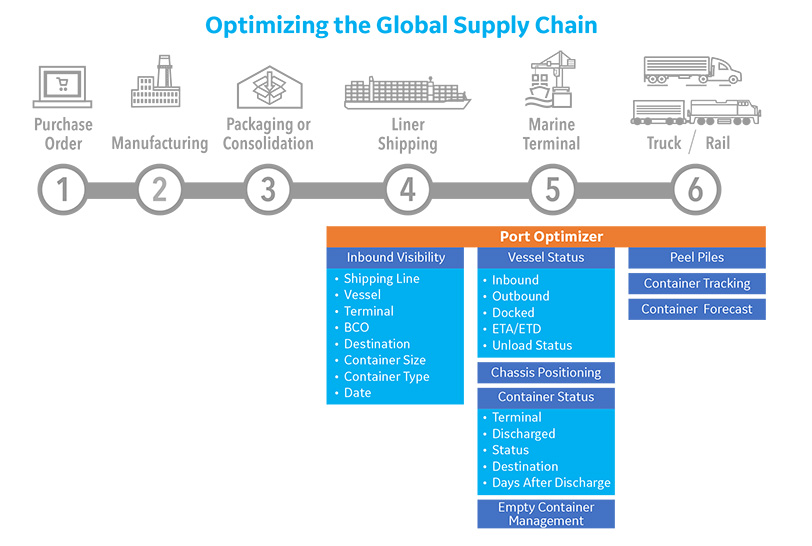Southern California's shippers seeking to “optimize” their dockside operations were given more good news by GE Transportation last week as the company announced that it had launched a pilot project with the Port of Long Beach.
GE's Port Optimizer software – which debuted at the neighboring Port of Los Angeles last year – is designed to enhance cargo flow as participating terminal operators and other stakeholders receive much improved advance notice of cargo arrival.
This information is coordinated with data on the availability of equipment, labor and other resources needed to move that cargo through the supply chain.
The timing of the announcement is auspicious, say port spokesmen, as Long Beach is forecasting a healthy growth of 4% in volume and revenue this year.
Noel Hacegaba, Managing Director of Commercial Operations at the Port of Long Beach, stated at the USC Marshall 6th Annual Global Supply Chain Excellence Summit in Los Angeles last week that even “trade tensions” with China would not dampen the cargo throughput significantly.
Three of the Port's six container terminals are involved – Long Beach Container Terminal, Total Terminals International and International Transportation Service.

Jen Schopfer, VP, General Manager of Transport Logistics for GE Transportation noted that the company will be piloting their product's core capabilities around advanced visibility and planning.
At the same time, stated Schopfer, GE is also launching some “Long Beach-centric” functionality – marine terminal operator and landside transportation integrations for better planning and gate transactions, including MatchBack Systems for dual transactions, and advanced/predictive analytics addressing truck congestion using GeoStamp's IOT platform.”
These capabilities, added spokesmen, serve many stakeholders across the port complex, “including but not limited to marine terminal operators, ocean and motor carriers, railroads and beneficial cargo owners.”
SC
MR


More Ports & Shipping
- Shining light on procurement’s dark purchases problem
- As Red Sea Crisis Drags On, Shippers Eye Alternatives
- Global Container Shipping Industry Sets Sights on Tech Investment, Capacity Concerns
- US Ports to Share $653M in Funding to Improve Throughput, Reduce Emissions
- The Astonishing Port of Laredo
- Navigating the Panama Canal Drought: Tips to Get Your Shipments Moving
- More Ports & Shipping
Latest Podcast

 Explore
Explore
Topics
Procurement & Sourcing News
- How S&OP provides the answer to in-demand products
- There is still work to do to achieve supply chain stability
- Blooming success: The vital role of S&OE in nurturing global supply chains
- How one small part held up shipments of thousands of autos
- Shining light on procurement’s dark purchases problem
- 40% of procurement leaders ignoring sustainability, study reveals
- More Procurement & Sourcing
Latest Procurement & Sourcing Resources

Subscribe

Supply Chain Management Review delivers the best industry content.

Editors’ Picks





